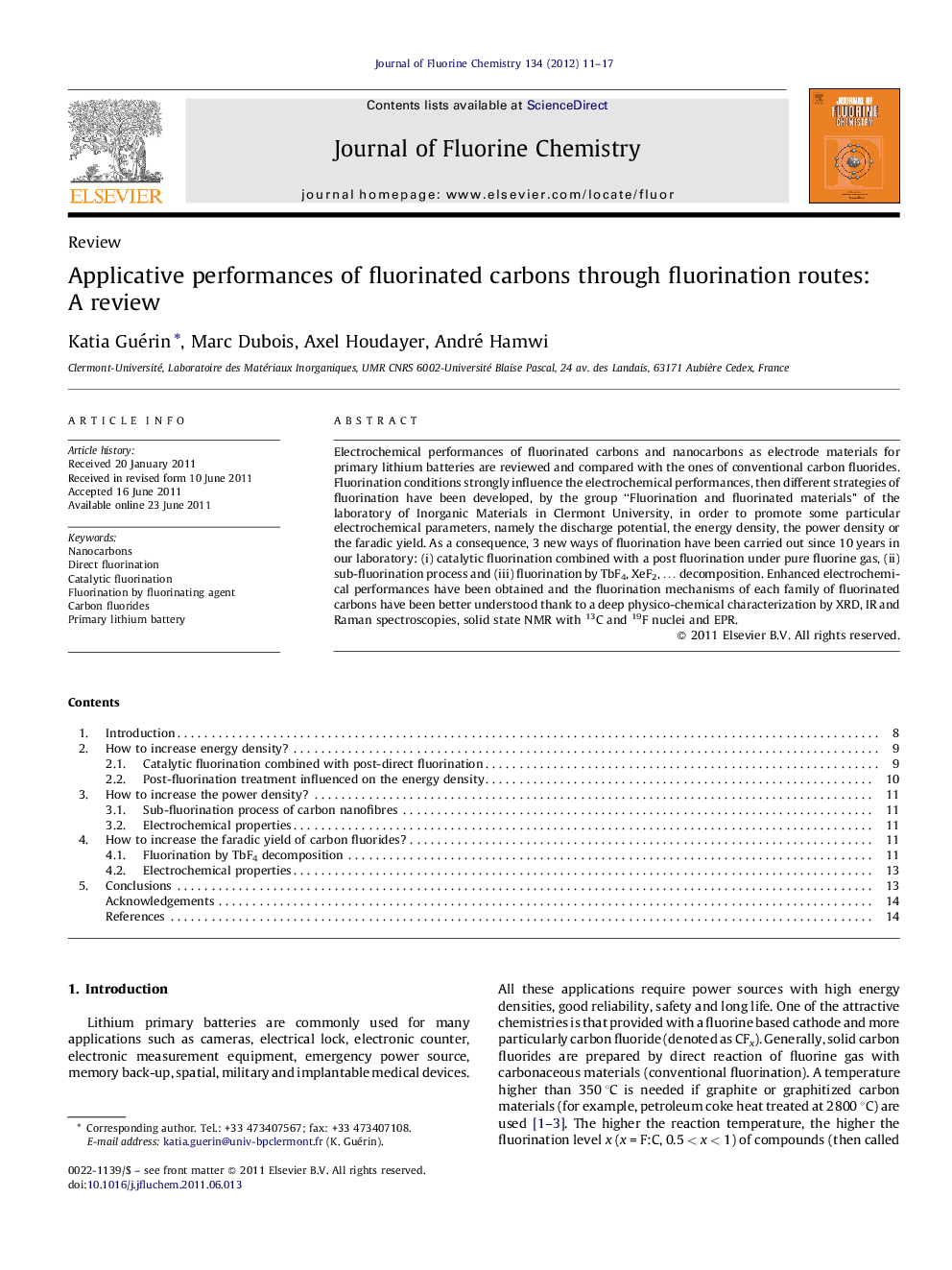| Article ID | Journal | Published Year | Pages | File Type |
|---|---|---|---|---|
| 1314083 | Journal of Fluorine Chemistry | 2012 | 7 Pages |
Electrochemical performances of fluorinated carbons and nanocarbons as electrode materials for primary lithium batteries are reviewed and compared with the ones of conventional carbon fluorides. Fluorination conditions strongly influence the electrochemical performances, then different strategies of fluorination have been developed, by the group “Fluorination and fluorinated materials” of the laboratory of Inorganic Materials in Clermont University, in order to promote some particular electrochemical parameters, namely the discharge potential, the energy density, the power density or the faradic yield. As a consequence, 3 new ways of fluorination have been carried out since 10 years in our laboratory: (i) catalytic fluorination combined with a post fluorination under pure fluorine gas, (ii) sub-fluorination process and (iii) fluorination by TbF4, XeF2, … decomposition. Enhanced electrochemical performances have been obtained and the fluorination mechanisms of each family of fluorinated carbons have been better understood thank to a deep physico-chemical characterization by XRD, IR and Raman spectroscopies, solid state NMR with 13C and 19F nuclei and EPR.
Graphical abstractElectrochemical performances of fluorinated carbons and nanocarbons as electrode materials for primary lithium batteries are reviewed. Since 10 years, 3 new ways of fluorination (i) catalytic fluorination combined with a post fluorination under pure fluorine gas, (ii) sub-fluorination process and (iii) fluorination by fluorinating agent decomposition have allowed to increase the energy and power densities as well as the faradic yield.Figure optionsDownload full-size imageDownload as PowerPoint slideHighlights► Review of fluorination ways to develop carbon fluorides for primary lithium battery. ► Bifluorination of graphitic carbons for high energy densities. ► Sub fluorination of nanocarbons for high power densities. ► Fluorination by solid fluorinating agent decomposition for increase of the faradic yield.
